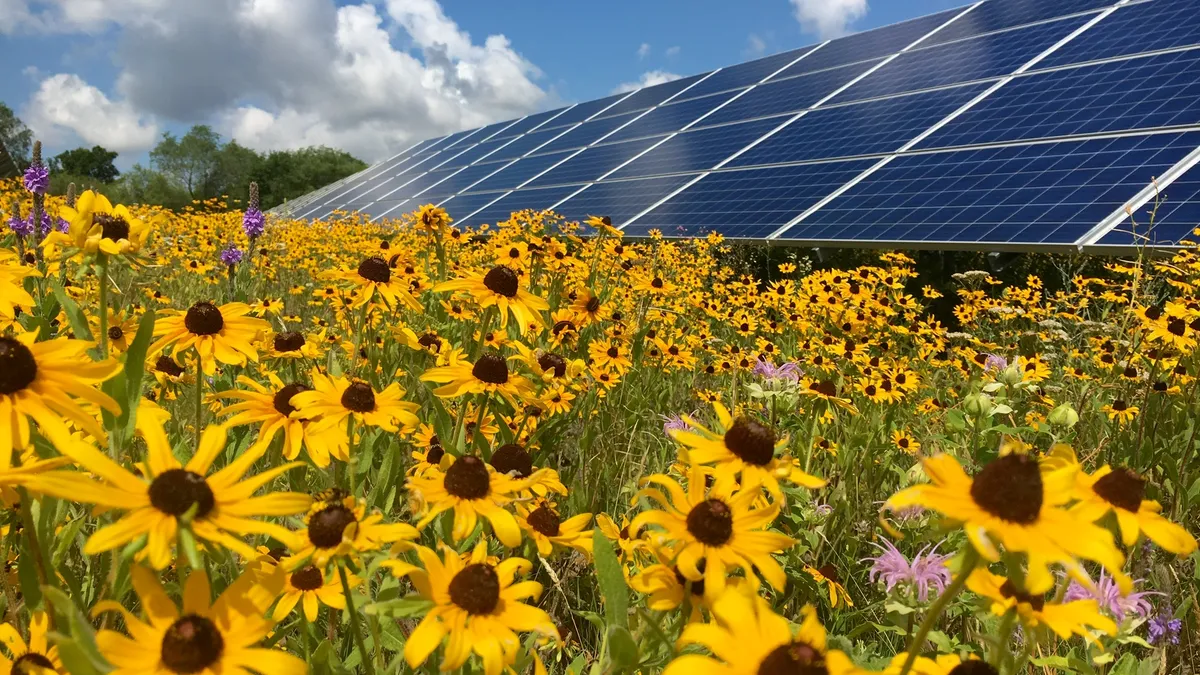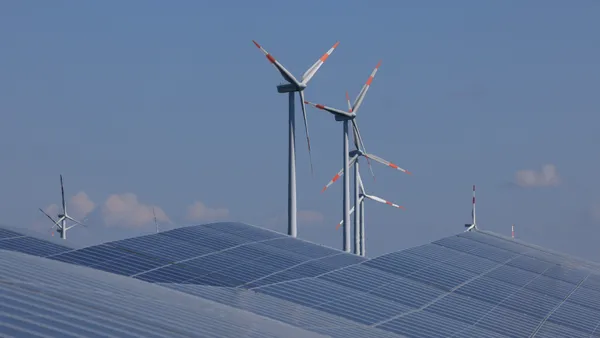Dive Brief:
-
Xcel Energy Minnesota announced Friday it will be the first utility in the U.S. to require disclosure of what type of vegetation will be planted with solar sites in all its future requests for proposals (RFPs).
-
The utility plans to add 2,600 MW to 3,000 MW of solar generation by 2030 and all those projects will be required to disclose a completed copy scorecard for pollinator-friendly sites. Pollinator-friendly vegetation isn't required in order for a project to be considered by the utility, but it will establish a precedent "of priorities and values," Rob Davis, director of the center for pollinators in energy at Fresh Energy, told Utility Dive.
- Pollinator friendly solar sites are a growing trend among utilities seeking to more holistically reduce their ecological footprint. Sites are designated as "pollinator friendly" based on state legislation, which was first passed in Minnesota in 2016 and has since spread to five other states.
Dive Insight:
The growth of pollinator-friendly solar sites comes as the falling price of renewables makes solar adoption increasingly attractive to utilities.
The intersection between solar power and vegetation is an important consideration, Jessica Fox, Senior Technical Executive of the Electric Power Research Institute told Utility Dive.
"Signals we’re seeing here are certainly popping up in other areas of the country," said Fox. "When [utilities are] moving to address something like greenhouse gas emissions they need to be considering other impacts."
Utility-scale solar takes up a lot of land and is often met with opposition from nearby landowners, particularly in rural areas where arable land could be used for agriculture. Pollinator friendly sites ease that transition and often make solar projects more attractive to the communities where they are sited.
"Xcel Energy has a long history of supporting pollinators and developing pollinator-friendly habitats at our power plants, substations and along our transmission lines," Matt Lindstrom, utility spokesperson, told Utility Dive in an emailed statement. "We want to ensure that there will be land for pollinators to grow and thrive in the area we serve, while we deliver clean renewable energy for customers."
Site scorecards are based off Minnesota's solar site management bill which establishes "voluntary solar site management practices" under which individual projects can be categorized as pollinator friendly if they meet certain perennial vegetation standards set by native plant experts. Illinois, New York, Maryland, Vermont and South Carolina have adopted similar legislation.
Environmental groups across Minnesota praised Xcel's move on Friday.
"The use of this scorecard by a major Midwestern energy producer sets a good example for developers across the country," said Audobon Minnesota in a statement. "Xcel is the first utility to formally require the scorecard in its solar RFP process and we hope more utilities follow suit."
The sites have popped up across the country as more utilities see the benefits of the practice. Alliant Energy last week announced its largest solar installation in Iowa, a 6.2 MW project, will have 20 beehives spread across 21 acres of native prairie plants.
Pollinator habitats can benefit utilities outside smoothing community solar adoption, according to the National Renewable Energy Laboratory (NREL), and by saving maintenance costs, which are otherwise expected to account for 20% of the price of photovoltaic installations by 2020.
Additionally, native plants create a sort of microclimate around the panels, which boosts solar efficiency, Gavin Meinschein, a lead civil engineer at ENGIE Distributed Solar told Utility Dive in August.
A study done by NREL found that 3,500 km² of agricultural land could benefit from potential pollinator friendly sites, as part an effort to "optimize the land use efficiency of those large scale solar facilities," Leroy Walston, one of the authors of the report, told Utility Dive in August.
"Pollinators are in decline, and wildflower plantings on solar farms can help provide the nutrition and habitat that bees and butterflies need, if established with a wide diversity of native plants," said Scott Black, executive director of the Xerces Society, which focuses on conservation of pollinators, in a statement sent to Utility Dive.
"Xcel Energy’s decision to include the Pollinator-Friendly Solar scorecard in solar project bidding is a smart move that will help promote high-quality pollinator habitat growing under and around the panels on solar farms."















